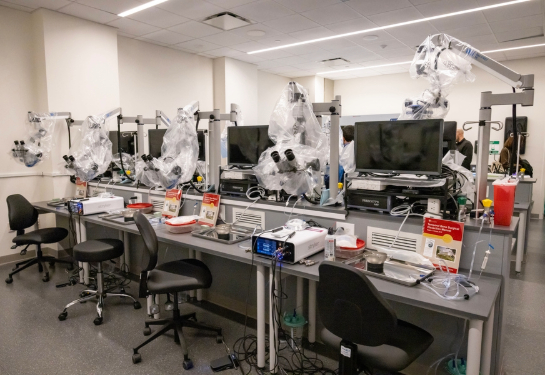Exceptionally rare procedure called clavicula pro humero avoids amputation
Surgeons use collarbone to create new upper arm for young cancer patient
When 9-year-old Sydney Engle was diagnosed with osteosarcoma, rapid treatment was required to prevent the cancer from spreading.
Treatment for osteosarcoma involves chemotherapy and surgery. Options are weighed based on the location, size, type and grade of the osteosarcoma and whether the cancer has spread beyond the bone.
“Sydney had an aggressive osteosarcoma involving her shoulder of her dominant (right) arm. Because of the extent of her disease and her age, surgical options were quite challenging,” said UC Davis pediatric musculoskeletal surgical oncologist and Chair of Orthopaedic Surgery, R. Lor Randall. “You have to consider durability and the ability to grow with the child.”
Sydney started chemotherapy immediately and three months later, she would have surgery.
The family was given several surgical options: Use part of Sydney’s collarbone to fix her arm or take a bone from her leg to use in her arm. Amputation was also discussed.
“The type of amputation she would need wouldn’t leave a nub for a prosthetic. They would have had to take from the middle of her shoulder almost to her neck,” Kacy Engle, Sydney’s mom, said. “Her chances of survival would be best, but her quality of life would be compromised.”
The Engles opted instead for an exceptionally rare procedure called clavicula pro humero (CPH) that involved using her collarbone to create a new upper arm. Randall is one of relatively few physicians who have performed the surgery. In the procedure, the clavicle, or collarbone, is transposed with its blood supply off the central vessels to function as the upper arm and attachment to the rest of the body.
“I believe our team was the first to do this in the United States years ago,” Randall said. “I first learned about the procedure in 2005 when I was touring in Africa, where they do not have as many options as we do here. We are now one of the most experienced teams in the world in utilizing this technique.”
The surgery took about 9.5 hours and was successful, although Sydney has had some challenges since then. She recovered so quickly and started using her arm so fast that the team had to operate again to reinforce the construct. At her age, it was about the diameter of a pencil.
“Bone cancers in this location and in this age group are always a challenge in terms of the reconstruction. No technique is perfect, but CPH is a good option,” Randall said.
Sydney finished chemotherapy, which took about a year, and has since returned to school full time.
“The care UC Davis provided was phenomenal,” said Jeremy Engle, Sydney’s father. “They were so positive and really helped us through some very challenging times.”
Learn more about pediatric orthopedics at UC Davis Children’s Hospital.




